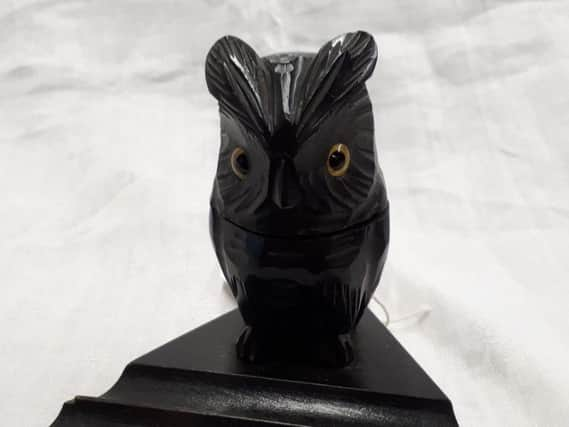Old stationary sets from schooldays past bring back the memories


The children are going back to school this week, so I thought it would be timely to mention a favourite school days collectable.
Ink wells and pen and pencil sets have an avid following with collectors. This ink well is unusual. The owls head bends right back at a 90 degree angle making it easy to fill up with ink. It is heavy and solid, so it won’t fall over.
Advertisement
Hide AdAdvertisement
Hide AdInkwells appear as early as ancient Chinese and Egyptian times and almost any authentic inkwell will have an interesting story to accompany it; they were even used to sign the
Declaration of Independence, the Bill of Rights and the peace treaties that ended World War Two.
Crafted from a variety of materials, styles, colours and shapes, including animals, birds, buildings and shoes, it was usually the wealthy who owned inkwells while the common folk dipped their pens straight into the ink bottle.
Inkwells were generally a representation of status for affluent businessmen who liked ornate inkwells on their office desks. Silver inkwells began to replace those made of wood, bone, leather or porcelain in the 1800s.
Advertisement
Hide AdAdvertisement
Hide AdThe decline of the inkwell began with the invention of the fountain pen in 1884, which not only carried its own supply of ink, but the ink was produced in a standard, controllable flow.
Collecting inkwells, pens and pencil sets is a popular hobby simply because they don’t take up much space to house, a collection can be grown quickly and reasonably cheaply and they are usually lovely to look at.
Historically pens were made from reeds and quills where a nib would be dipped in ink, hence why inkwell and pens are often collected together.
The Ancient Egyptians developed writing on papyrus scrolls and used reeds pens. These continued to be used until the middle ages where they were slowly replaced by quills.
Advertisement
Hide AdAdvertisement
Hide AdBut it wasn’t all quills and reeds! Samuel Pepys the renowned diarist made a reference to a “silver pen” in a diary extract from August 1663, so the pen we know and love is older than one would think.
The most expensive fountain pen was bought for an amazing $218,000 by a Japanese collector in 1988. It was made by Redfen, took a team of skilled craftsmen a year to make and had emeralds, amethysts, rubies, sapphires and onyx encrusted onto it.